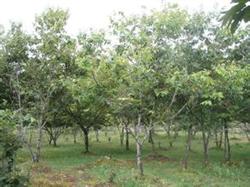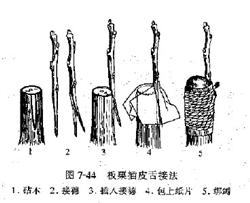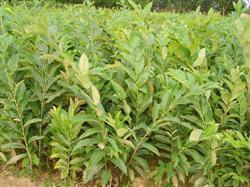Prevention and Control of key Diseases and insect pests of Chinese Chestnut

1. After the onset of the bud, the hypocotyls appeared brown spots about 2 mm in diameter, followed by small black-brown spots 1 mm in diameter on the cotyledons. two。 Leaves infected, primary gray-brown or dark-brown raised spots, and then expanded to a diameter of 2-6 mm black-brown round spots, there are obvious concentric patterns, the periphery has a yellow-white halo. When the air is moist, there is black mildew on the disease spot, which can lead to leaf death. 3. The disease occurred on the stem petiole, stem and fruit axis, and the spot was oval to fusiform, with dark brown wheels, which withered the lateral branch or the whole plant when it surrounded the lateral branch and the main stem. 4. The disease spot on the pod is basically similar to that on the leaf. When the disease is serious, the seed stops growing and forms red seed. It is easy to crack before harvest, and the hyphae can grow in the pod when the humidity is high. Infection cycle pathogens oversummer or winter with hyphae or spores inside and outside the diseased plants and seeds. The disease can occur every year in the south, and there is no obvious overwintering period. The hyphae after summer and winter formed conidia under the condition of high humidity, which spread with the wind and caused the first infection. Sowing infected seeds can cause seed decay and dead seedlings. The new conidia on the diseased plant can be re-infected many times with the wind. Occurrence characteristics of Brassica napus type rape is the most susceptible, Brassica napus type is more resistant. High temperature and high humidity are beneficial to the disease. Rape flowering meets high temperature and rainy weather, the incubation period is short, and it is easy to occur. It is rainy during the development of pods, which is very beneficial to spore transmission and infection. In the low-lying continuous cropping land, the disease is serious after the application of nitrogen fertilizer. Control method 1. Hangzhou disease varieties or disease-free seeds were selected for agricultural control, and disease-free plants were retained before harvest. Rotation with non-cruciferous crops. Avoid excessive application of nitrogen fertilizer and pay attention to increase the application of potassium fertilizer. Water the right amount at the right time. Clean up the sick and disabled bodies in the field in time. two。 The seeds were soaked in 50 ℃ warm water for 20 minutes and 30 minutes. The seeds can also be mixed with 50% thiram of 0.4% seed weight or 0.5% of prohydantoin. The seeds can also be soaked in 40% formalin 100 times solution for 25 minutes, washed and dried before sowing. 3. In the early stage of the disease in the field, spraying in time, spraying once every 7 days, spraying continuously for 2 or 3 times according to the condition. The medicament can choose 50% prohydantoin 1500 times, or 75% chlorothalonil 600x, or 64% disinfectant alum 500x, or 80pc 800x, or 12% green copper EC 600x or 70% mancozeb 500x.
- Prev

Closely planted chestnut shaping and pruning
Selection of superior seed scion: select excellent chestnut varieties with good local performance, and select strong fruiting branches with full growth and development, full apical buds and no diseases and insect pests, with a general length of 7-8 cm and 3-4 buds. The scion should be picked and picked now, or collected in advance and stored at low temperature after wax sealing. Grafting period: one.
- Next

Irrigation and soil moisture Conservation in Chestnut Orchard in Spring
Chinese chestnut is a deciduous tree, is one of the woody grain trees, long life, known as "iron crops". Chestnut is nutritious and delicious, which can be used as a substitute for grain; all parts of chestnut can be used as medicine, bark, branches and leaves, wood pith can also be extracted and glued, and leaves can also raise camphor silkworm and tussah silkworm. Chinese chestnut wood is hard, straight-textured, moisture-resistant and anticorrosive.
Related
- Moge, come on! The staff of the peasant association in the producing area of cantaloupe were frightened when the crowd gathered.
- Causes and Solutions of low Fruit setting rate of Apple
- Symptoms and control measures of passion fruit virus disease
- Fruit growing lesson: how do apple orchards keep high yields?
- Can you build orchards in the mountains? What are the pros and cons?
- How to manage the coloring period of Crisson grape?
- This paper introduces the processing technology of two kinds of fig products.
- How much is a month for retired teachers in rural areas by 2020?
- How can strawberry planting increase sugar content? We should pay attention to management in many aspects.
- What are the cultivation techniques on how to improve the yield of golden fruit?

